Xiaoning Lei
ASBench: Image Anomalies Synthesis Benchmark for Anomaly Detection
Oct 09, 2025Abstract:Anomaly detection plays a pivotal role in manufacturing quality control, yet its application is constrained by limited abnormal samples and high manual annotation costs. While anomaly synthesis offers a promising solution, existing studies predominantly treat anomaly synthesis as an auxiliary component within anomaly detection frameworks, lacking systematic evaluation of anomaly synthesis algorithms. Current research also overlook crucial factors specific to anomaly synthesis, such as decoupling its impact from detection, quantitative analysis of synthetic data and adaptability across different scenarios. To address these limitations, we propose ASBench, the first comprehensive benchmarking framework dedicated to evaluating anomaly synthesis methods. Our framework introduces four critical evaluation dimensions: (i) the generalization performance across different datasets and pipelines (ii) the ratio of synthetic to real data (iii) the correlation between intrinsic metrics of synthesis images and anomaly detection performance metrics , and (iv) strategies for hybrid anomaly synthesis methods. Through extensive experiments, ASBench not only reveals limitations in current anomaly synthesis methods but also provides actionable insights for future research directions in anomaly synthesis
A Survey on Industrial Anomalies Synthesis
Feb 23, 2025Abstract:This paper comprehensively reviews anomaly synthesis methodologies. Existing surveys focus on limited techniques, missing an overall field view and understanding method interconnections. In contrast, our study offers a unified review, covering about 40 representative methods across Hand-crafted, Distribution-hypothesis-based, Generative models (GM)-based, and Vision-language models (VLM)-based synthesis. We introduce the first industrial anomaly synthesis (IAS) taxonomy. Prior works lack formal classification or use simplistic taxonomies, hampering structured comparisons and trend identification. Our taxonomy provides a fine-grained framework reflecting methodological progress and practical implications, grounding future research. Furthermore, we explore cross-modality synthesis and large-scale VLM. Previous surveys overlooked multimodal data and VLM in anomaly synthesis, limiting insights into their advantages. Our survey analyzes their integration, benefits, challenges, and prospects, offering a roadmap to boost IAS with multimodal learning. More resources are available at https://github.com/M-3LAB/awesome-anomaly-synthesis.
Semantic Data Augmentation for End-to-End Mandarin Speech Recognition
Apr 26, 2021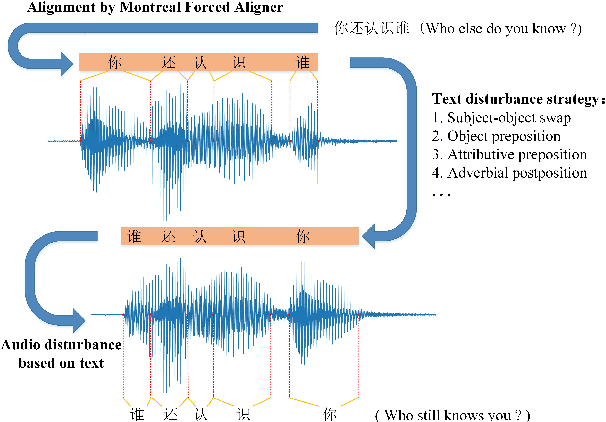
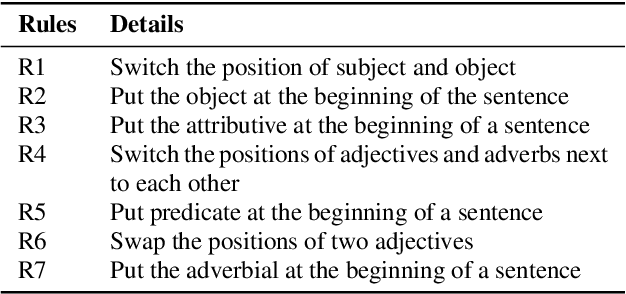

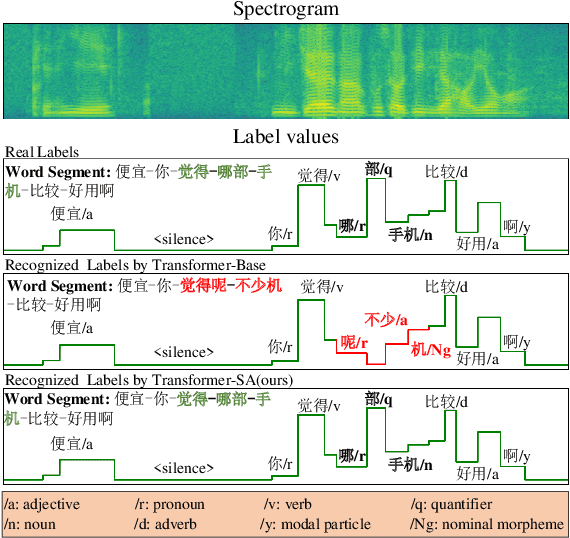
Abstract:End-to-end models have gradually become the preferred option for automatic speech recognition (ASR) applications. During the training of end-to-end ASR, data augmentation is a quite effective technique for regularizing the neural networks. This paper proposes a novel data augmentation technique based on semantic transposition of the transcriptions via syntax rules for end-to-end Mandarin ASR. Specifically, we first segment the transcriptions based on part-of-speech tags. Then transposition strategies, such as placing the object in front of the subject or swapping the subject and the object, are applied on the segmented sentences. Finally, the acoustic features corresponding to the transposed transcription are reassembled based on the audio-to-text forced-alignment produced by a pre-trained ASR system. The combination of original data and augmented one is used for training a new ASR system. The experiments are conducted on the Transformer[2] and Conformer[3] based ASR. The results show that the proposed method can give consistent performance gain to the system. Augmentation related issues, such as comparison of different strategies and ratios for data combination are also investigated.
Improving Transformer-based Speech Recognition Using Unsupervised Pre-training
Oct 31, 2019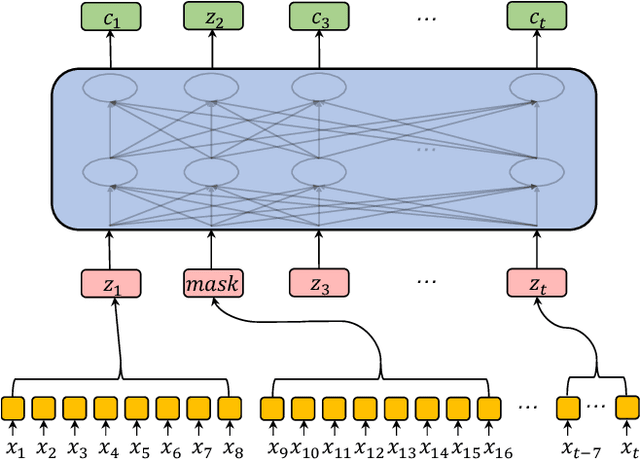

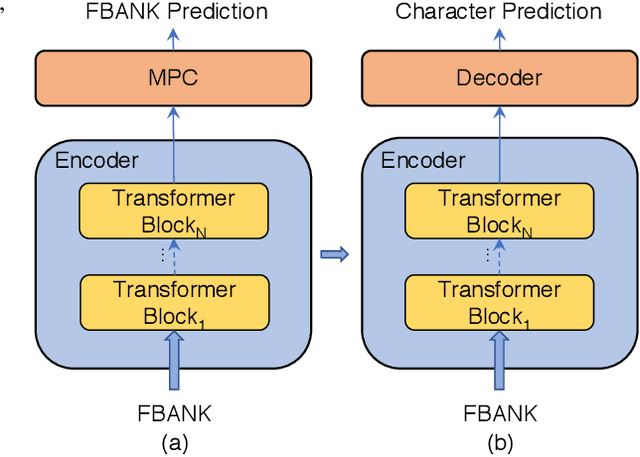

Abstract:Speech recognition technologies are gaining enormous popularity in various industrial applications. However, building a good speech recognition system usually requires large amounts of transcribed data, which is expensive to collect. To tackle this problem, an unsupervised pre-training method called Masked Predictive Coding is proposed, which can be applied for unsupervised pre-training with Transformer based model. Experiments on HKUST show that using the same training data, we can achieve CER 23.3%, exceeding the best end-to-end model by over 0.2% absolute CER. With more pre-training data, we can further reduce the CER to 21.0%, or a 11.8% relative CER reduction over baseline.
 Add to Chrome
Add to Chrome Add to Firefox
Add to Firefox Add to Edge
Add to Edge